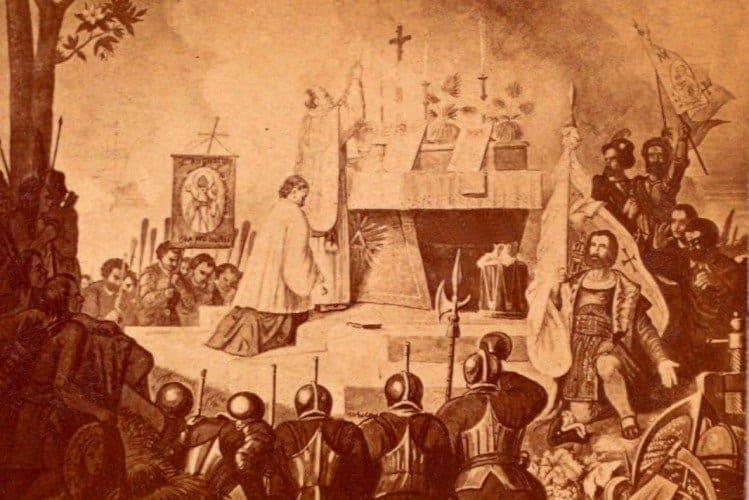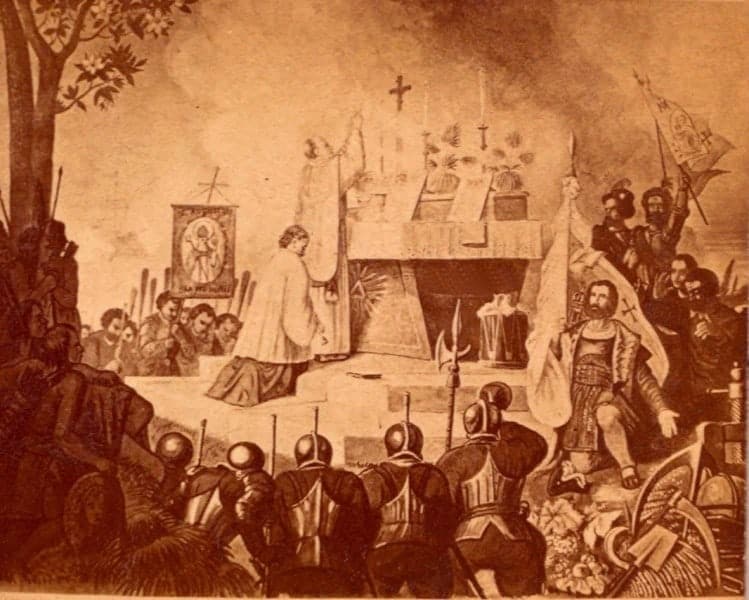Is a New Evangelization, a springtime in the Church, possible without a comprehensive, extensive reform of the liturgy? No.
What do I mean? By “reform of the liturgy,” I’m talking about the long-overdue identification and root and branch elimination of the endemic abuses that have glommed onto the Mass since the confusion following the Second Vatican Council. But we cannot eliminate something unless we’ve identified it for what it is, and therein lies the problem. Most Catholics are unaware of the virus that has found its way into the bloodstream.
We write about this topic with considerable frequency on CCC, and with good reason.
The soul’s nourishment requires the Sacraments. The liturgy, the channel from which the Eucharist flows into the Church and her members, is God’s ritual, not ours. We don’t have the right to mess with it. Vatican II said pretty much the same thing. But that hasn’t kept us from doing just that, and to such a degree that our liturgy has become almost unrecognizable; sacramental, yes, but gummed up with a host of Protestant and politically correct accretions that perilously muddy the waters of Catholic theology.
I often wonder what a Catholic from the 1950s would say if he witnessed the bizarre and embarrassing spectacles that have been incorporated into the liturgy: the dancing, the meaningless psychobabble, the pastel ribbons, the handholding, the polyester vestments, and, of course, those schmaltzy, awful songs that are almost as maddening as a Richard Kessler, “I want to be your jeweler” commercial.
From diocese to diocese, parish to parish, a sense of relativism and antinomianism has crept into our liturgical life. Cardinal Raymond Burke has spoken about this at length in a recent interview:
Sadly, in the time after the Second Vatican Council, there was a reform of the sacred liturgy which made it man- centered and banal. In some cases it actually became hard for people to bear because of illicit insertions, foreign agendas, and imposition of the personalities of priests and congregations into the liturgy to the point that people began to think that the Mass was some sort of social activity. If they did not find it acceptable, they did not go anymore.
Rules, rubrics, norms, traditions, the result of centuries of prayer and inspiration, are out the window. Catholics in search of a liturgy that actually jibes with the ancient, solemn traditions of the Church have assumed the role of liturgical tourist, bouncing from parish to parish until they’re lucky enough to find a home where some sense of the sacred remains. Worse still, these Catholics are often treated as antediluvian pariahs by bishops and many priests who simply ignore their pleas for solemn liturgy and turn a blind eye to the very real and harmful problem of liturgical abuses run amok.
Of course, first and foremost, we need holy priests. But we also need holy priests who are aware of and honor the liturgical traditions of the Church. These traditions, from Latin to Gregorian Chant, to the proper, reverent offering of Mass (to name only a few), aren’t mere liturgical accessories that can be dropped at the whim of the priest. That’s not the message of the Second Vatican Council, and that’s not the message of Pope Emeritus Benedict XVI.
A great place to begin is in the seminaries. And that will require leadership from the bishops. Those training to be priests should assiduously pour over Benedict’s trove of writings on liturgy and familiarize themselves with the extraordinary form of the liturgy. Perhaps more than any other pope in Church history, Benedict has left us with a gold mine of wisdom on the liturgy. It would be a shame not to take advantage of this historic opportunity.



